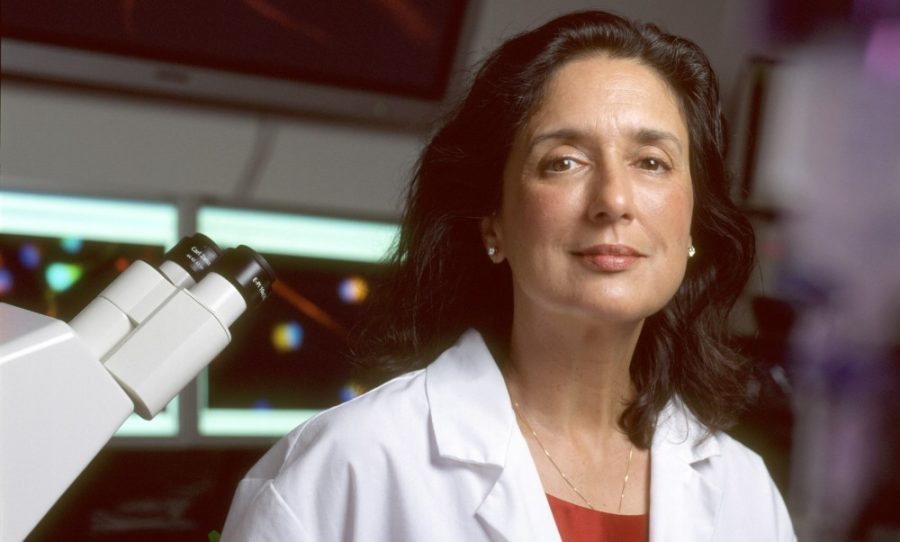Dr. Roberta Brinton , UA neuroscientist and director of the Center for Innovation in Brain Science, was awarded a $10.3 million grant last month. The National Institutes of Health funds will support Brinton’s search for the reason why women are statistically more likely to develop Alzheimer’s disease than men.
The research will take place over a five year period, while Brinton has several theories as to why more women than men develop Alzheimer’s. In particular, the grant will support a project titled “Perimenopause in Brain Aging and Alzheimer’s Disease.”
Alzheimer’s is the fifth leading cause of death and disparately targets women, particularly the elderly. Those in their 60s are twice as likely to develop Alzheimer’s than breast cancer. One in every six women past the age of 65 will develop Alzheimer’s while just one in every 11 men will develop the disease.
RELATED: Deadly parasite may help defend against Alzheimer’s
The brain depends on the lipid glucose for energy. Despite representing only two percent of body weight, the brain takes up 20 percent of the glucose in the body. When glucose levels in the brain run low, the body can transfer lipids from the liver to the brain. But when all supplies are exhausted, the brain begins to turn on itself, turning its own cells into food.
This is why Alzheimer’s disease manifests as memory loss—the consumption of brain cells destroys the connections the brain uses to transfer messages.
One theory for the cause of Alzheimer’s disease is the presence of the cholesterol-transferring gene apolipoprotein E4. Other kinds of APOE exist, including two and three. Neither of these genes carry a risk factor.
“People with two copies of APOE4 have a very high risk of developing Alzheimer’s,” Brinton said.
APOE4 is a poor cholesterol transporter, and a build up of cholesterol can lead to problems within the brain such as Alzheimer’s. But although APOE4 is a risk factor, a 2005 comparative study in the Annals of Neurology showed it is not a guarantee of the disease.
Puberty, pregnancy and menopause are also all risk factors. While we all go through puberty, only women experience the latter two. Most people come out of puberty in good health, but 10 percent risk nervous system disorders such as schizophrenia, multiple sclerosis and depression. Similarly, 10 percent of women who have given birth develop post-postpartum depression and multiple sclerosis.
“These transition states are states of vulnerability,” Brinton said.
Since women go through more of these transition states, it would stand to reason more women would suffer from Alzheimer’s.
RELATED: Going deeper: UA scientists use sound waves to look at the brain in new ways
Another factor is perimenopause, and this is the focus of the grant award. Perimenopause is a stage close to menopause wherein menstrual cycles happen unpredictably, leading to irregular estrogen production. The problem with this is, according to Brinton, is that “estrogen promotes glucose uptake into the brain, metabolism of glucose in the brain, and generation of energy in the brain.”
Because of this, a drop in estrogen inhibits glucose production for women’s brains more so than for men. Despite women producing more estrogen than men, on average men in their 70s have more estrogen than women at the same age.
The evidence for the connection between perimenopause and Alzheimer’s, as Brinton puts it, is that the disease spends “20 years in the making.” Alzheimer’s begins to take effect 20 years before diagnosis, which typically occurs around age 70.
For women, this would make the onset of the disease appear around age 50, and coincide with the average age of menopause. It is this suspicious correlation that Brinton will be using the research grant to study.
In order to further explore her theory on estrogen and glucose in women with Alzheimer’s, Brinton plans to genotype people with the APOE4 gene as well as mice with the same gene. Afterward, she will observe how well the mice brains use glucose. With this information, she hopes to uncover how to prevent the mice brains from eating themselves.
“We want to know what we can give these mice that are now going through this aging process that prevents them from using this white matter [and developing Alzheimer’s],” Brinton said.
Follow William Rockwell on Twitter.















